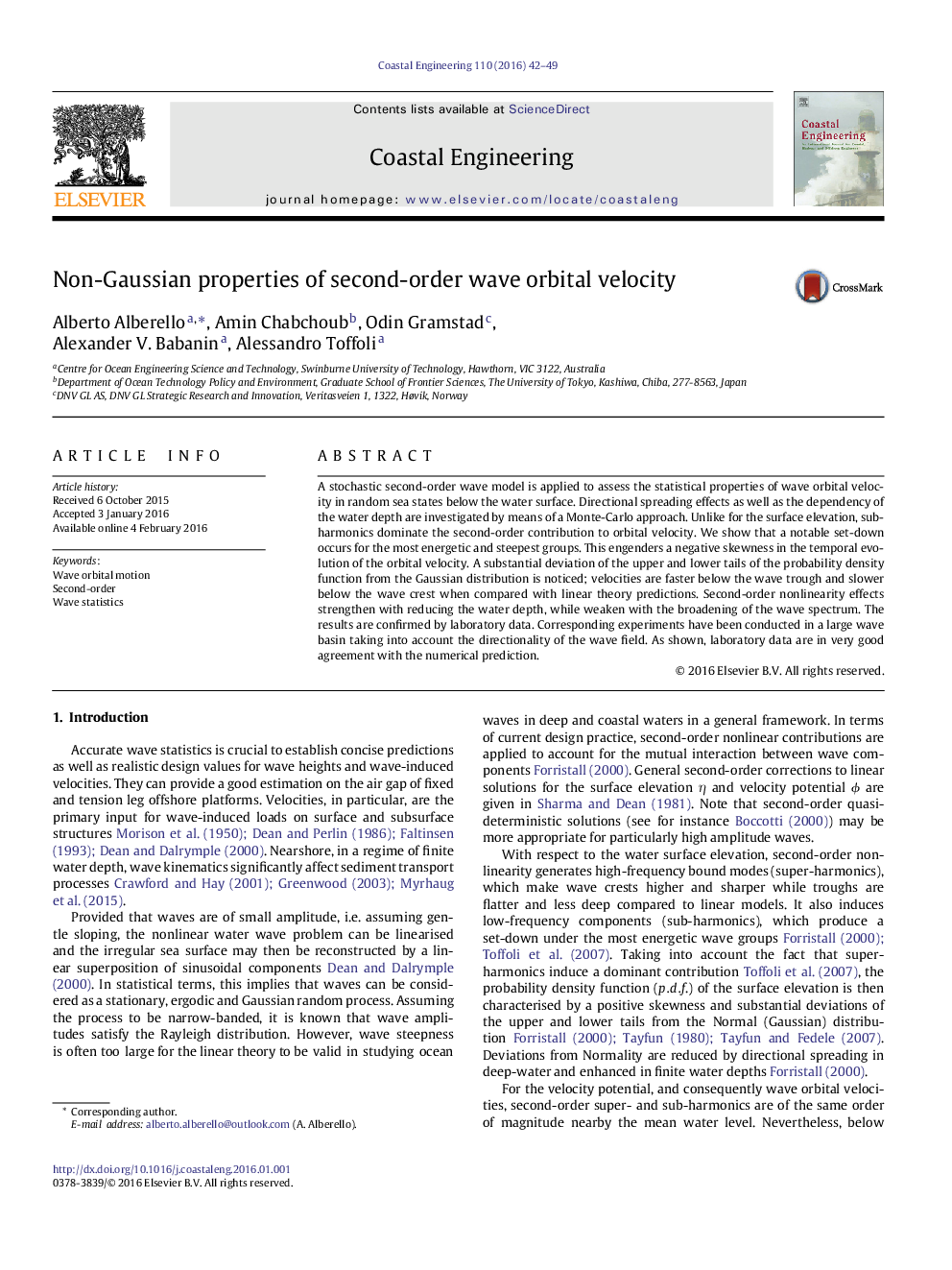| Article ID | Journal | Published Year | Pages | File Type |
|---|---|---|---|---|
| 1720527 | Coastal Engineering | 2016 | 8 Pages |
•At the second-order, the horizontal velocity is dominated by subharmonics generated by the interaction of wave pairs.•The p.d.f. of the horizontal velocity is negatively skewed, it substantially deviates from Gaussianity.•Water depth sensibly affects the deviation from Gaussian statistics while directional spreading has only a marginal effect.•Monte-Carlo numerical simulations are corroborated by physical measurements in a large directional wave basin.
A stochastic second-order wave model is applied to assess the statistical properties of wave orbital velocity in random sea states below the water surface. Directional spreading effects as well as the dependency of the water depth are investigated by means of a Monte-Carlo approach. Unlike for the surface elevation, sub-harmonics dominate the second-order contribution to orbital velocity. We show that a notable set-down occurs for the most energetic and steepest groups. This engenders a negative skewness in the temporal evolution of the orbital velocity. A substantial deviation of the upper and lower tails of the probability density function from the Gaussian distribution is noticed; velocities are faster below the wave trough and slower below the wave crest when compared with linear theory predictions. Second-order nonlinearity effects strengthen with reducing the water depth, while weaken with the broadening of the wave spectrum. The results are confirmed by laboratory data. Corresponding experiments have been conducted in a large wave basin taking into account the directionality of the wave field. As shown, laboratory data are in very good agreement with the numerical prediction.
